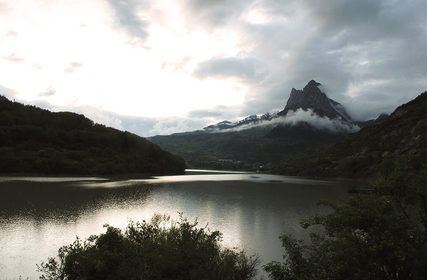Most popular locations in Испания
-
Барселона
Barcelona is Spain’s second largest city and a major economic, cultural and touristic destination. Located on the northeast coast of the Iberian Peninsula, Barcelona is one of the most visited cit...
-
Теулада
-
Эль Chaparral
-
Фуэнхирола
Fuengirola is a large town on the Costa del Sol, ideally located just 20 minutes from Málaga Airport. Well known for having over 8 kilometers of beaches, Fuengirola offers more than just beach lif...
-
Torre Del план
-
Картахена
Spain is one of Europe’s top destinations and attracts visitors that are drawn to a unique Iberian mix of traditional culture, friendly people, great cuisine and outstanding scenery.
Passionate and charming, it’s a country you’ll enjoy discovering whether you are visiting sleepy villages, living it up in modern cities or getting a cultural hit at one of the many historical ruins.
A brief history
Spain is a conglomeration of lingering cultural links due to a large number of cultures who have invaded, conquered or crossed into its lands.
The Phoenicians flourished during a period of art, architecture and horticultural significance. Spain prospered under the Roman Empire when it was a major trading post in mining, agriculture and exports of garam (fish sauce).
Between the 17th and 19th centuries, Spain was tarred by inter-European conflicts which continued until the Spanish Civil War of more recent times.
Today, visitors to Spain bear witness to a country with a tumultuous past that has left a rich legacy of beautiful churches, plazas with monuments, stunning royal palaces and magnificent architecture.
When to go
Depending on where you want to go, Spain is a year round destination.
The ideal months to visit are May and October as the temperatures are pleasant, and you will avoid the tourist crowds.
The height of summer (July and August) can be very hot, and August especially is when Spaniards escape main cities such as Seville and Madrid and head to the coastal resorts for respite from the heat so expect crowds and higher prices along the coastal zones.
Between December and February, you won’t be competing for hotel rooms or queues at tourist attractions but you’re likely to see rainfall in the north. The south of Spain is much milder during these months.
Throughout the year, Spain welcomes visitors with local and national events so regardless of when you visit there will be something happening. Don’t miss La Tomatina (Buñol), La Féria (Malaga) or the Running of the Bulls (Pamplona) festivals.
Getting around
Spain is a country that is well connected for transport with buses and trains being generally reliable and safe. However, to really appreciate the different geographical terrain of this large country a private car is necessary.
Having your own transport means you can discover countryside plains peppered with olive groves, head to the Sierra Nevada mountains for climbing or ski resorts, slip to the Costa del Sol to work on your tan or go roaming on the Balearic or Canary Islands.
Meet the locals
Spaniards are incredibly charming and hospitable people. They are proud of their culture and their country and will try their best to show you Spain’s greatest assets.
If you fancy immersing yourself in local life, book a table at a tapas bar where you can rub shoulders with the locals over paella and pulpo a la gallega (Galician squid). Be wowed by a flamenco performance – you may even be invited to join in! And for a true Spanish experience you can’t beat the vibrant night life – Spaniards like to party, so grab a sangria and stay up late.
Culture & customs
Spain is culturally diverse and elements of varying cultures including Basque, Catalonian and Galician are shown through the language, architecture, food and festivals. This vast heritage over millennia has resulted in a country dotted with amazing castles and palaces – don’t miss the Alhambra Palace in Granada.
Two best known cultural experiences are flamenco and bullfights. For an authentic flamenco experience, head to Seville or the gypsy districts of Granada. Bullfights remain controversial today, however you can watch one in April in Seville or at the San Isidro festival in Madrid in May.
And don’t forget to do what the Spaniards do and take an afternoon siesta!















